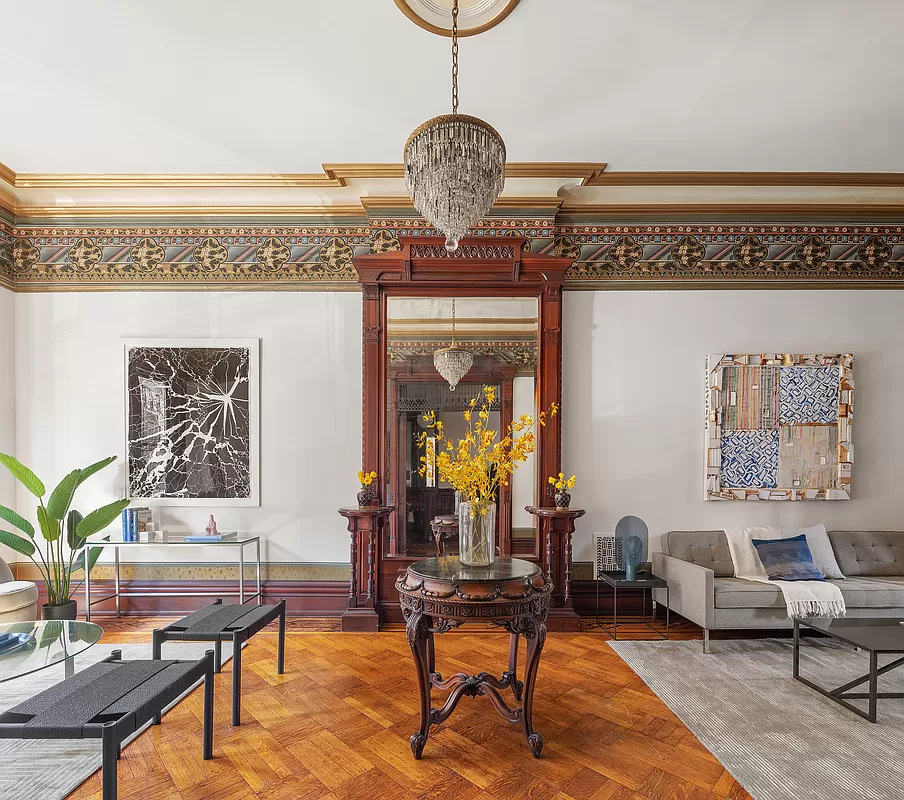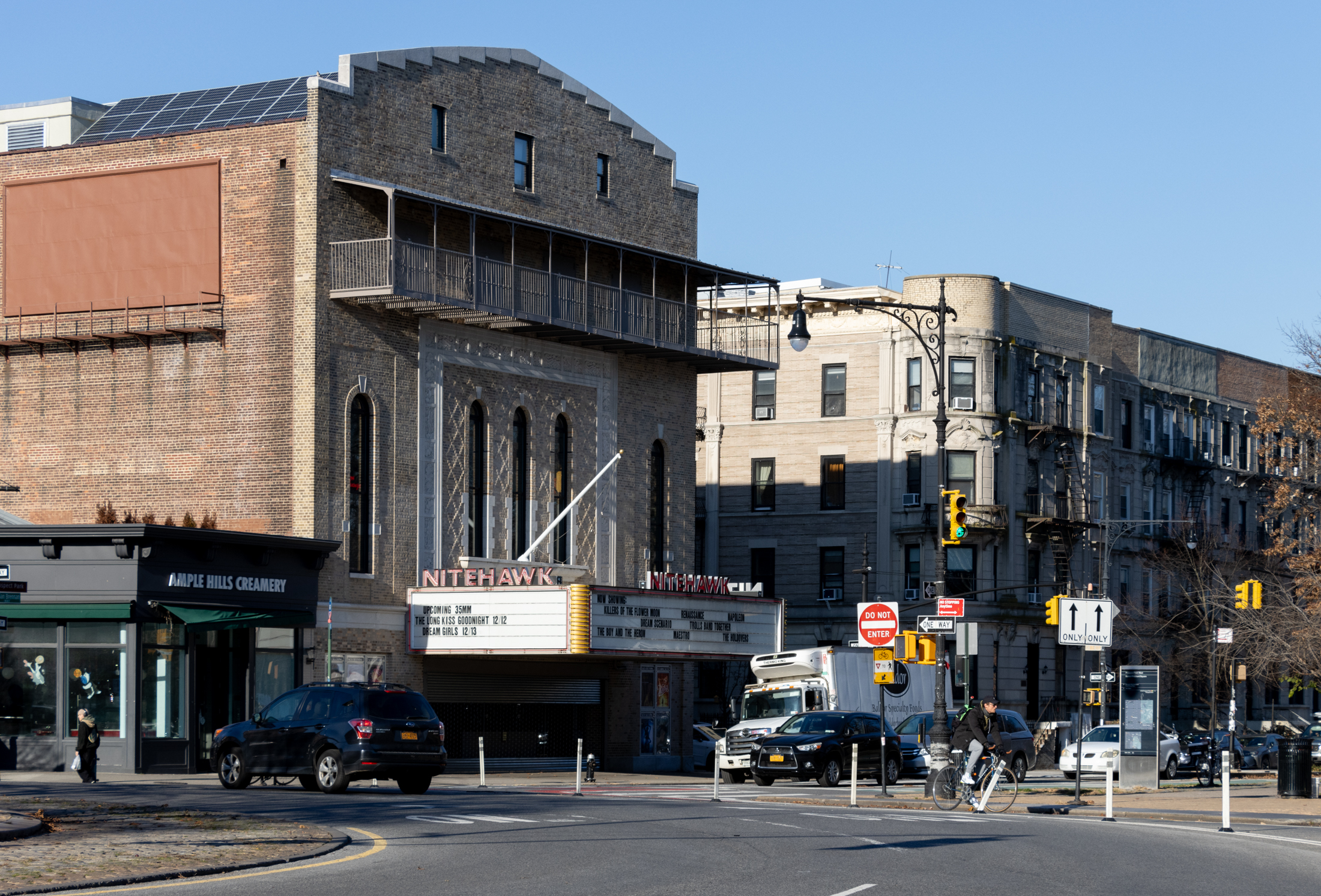Building of the Day: 271 Ninth Street
Editor’s note: An updated version of this post can be viewed here. The BOTD is a no-frills look at interesting structures of all types and from all neighborhoods. There will be old, new, important, forgotten, public, private, good and bad. Whatever strikes our fancy. We hope you enjoy. Address: 271 Ninth Street, between 4th and…

Photo via nyc architecture
Editor’s note: An updated version of this post can be viewed here.
The BOTD is a no-frills look at interesting structures of all types and from all neighborhoods. There will be old, new, important, forgotten, public, private, good and bad. Whatever strikes our fancy. We hope you enjoy.
Address: 271 Ninth Street, between 4th and 5th Avenues
Name: Former William B. Croynyn House, now Slope Music and residence
Year Built: 1856-57
Architectural Style: Italianate/French Second Empire
Architects: Patrick Keely
Landmarked: yes, also on National Registry of Historic Places
Why chosen: The first time I passed this house, I couldn’t believe it was there, nestled between its neighbors, a bright spot of color amidst some flats buildings and the Van Brunt Post Office. How absolutely cool! The history of the house is equally interesting. It was designed by Patrick Keely in 1856, probably one of his first commissions. He would go on to be the most prolific Catholic church architect on the East Coast, designing hundreds of churches in NY, CT, and Massachusetts. At the time, Park Slope was suburbia, and country villas of this kind were built as retreats for busy successful businessmen like Croynyn, who was a successful Wall Street man. The house remained in the Croynyn family only until 1862. By 1898, nearby 4th Avenue had grown up as a commercial street, and the location was perfect for Charles Higgins to establish his Higgins Ink Company offices and factory. The factory was located directly behind the house, and today is housing. In addition to his very successful, (and still going strong) ink business, Higgins was responsible for the Minerva statue in Green-Wood Cemetery, and is buried behind her, on the hill. In 1981, jazz musician and teacher Charles Sibirsky and his wife purchased the house, and opened a music school. Architect Eric Safyan restored the entryway and the decorative ironwork cresting, as well as a new rear deck. The house has all of the classic Second Empire goodies: the general shape, mansard roof, the decorative slate tiles, and the handsome cupola. It also has many Italianate elements, especially in the acanthus brackets on the porch and those supporting the roofs of the bays. This is a great house, with a great history, fortunately preserved by Higgins Ink for all of the years when it probably would have been lost, ending in the fantastic restoration by the Sibirsky’s.
Photo: Googlemaps
Photo: Forgotten NY











Nice – this might be the first non-ecclesiastic Keeley building I’ve ever seen!
RE: Higgins Ink; my father, who did calligraphy and made illuminated testimonial plaques always used Higgins India ink in the ’40s and ’50s, so i have fond recollections of the brand.
Last summer I bought a nice Parker 51 pen and pencil set in a Vermont antique shop (for all of $6.00). The only fountain pen ink I could find in Brattleboro was Higgins black “Fountain Pen India Ink”–TERRIBLE stuff that clogged the pen!. At least, unlike true India ink, which would permanently clog a fountain pen, this stuff is water soluble and dissolved with a day of soaking. The pen works fine with Levingers ink or my favorite Waterman Florida Blue, but I’ll NEVER buy another Higgins product.
this just proves it’s stupid to always have your eyes on the ground when you are walking around cuz ive never seen this house but passed it many many many times
*rob*
Here are some paintings and photographs of the interior.
http://jakesbodega.com/
Funny, just passed it today, its zany blue hollering out on a grey day in a grey block. Looks like a kid’s dollhouse that done growed. Delightful to learn about the associations behind it–and very apropos to have an ink connection, with that wild color!
Great job MM. I love this house and this post.
You know, I almost stopped and snapped a photo of this house on Sunday afternoon. I was worried about being on time to my destination so I didn’t pause. I swear you read my mind!
I love this house. I look at it and I am transported to a small town in the middle of America, far away from Brooklyn. Great post MM.
Wow is right. Has this ever been on any house tour, etc? Even the factory building has an interesting facade. Great post, MM.